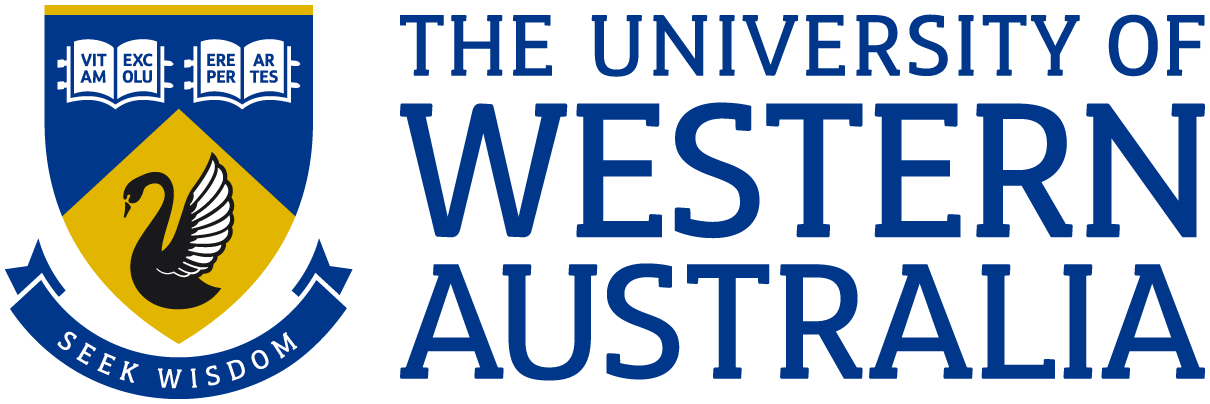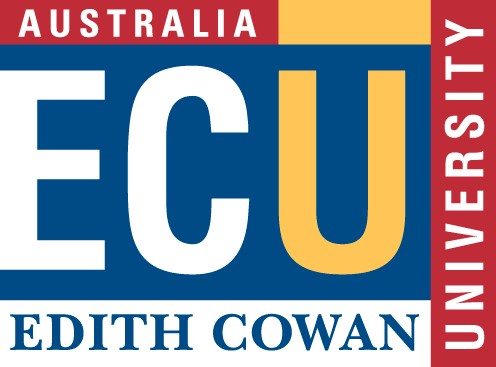The WA High Performance Sport Research Centre (HPSRC) aims to provide high performance sport programs at the Western Australian Institute of Sport with evidence-based, innovative solutions to performance-driven questions via uncompromising high quality research. The key intent of the Centre is to produce practical and applied research outcomes, which can subsequently be translated into the daily training environment of WAIS sport programs in order to optimise current practice and athlete success.
Objectives of the Centre
- To undertake multidisciplinary, collaborative sport science research that provides evidence-based solutions to performance-driven questions with the aim of improving current practice in order to enhance athlete performance.
- To develop research programs that align with, and contribute to the National Research Agenda of Australian Sport in the National Institute Network.
- To undertake collaborative research projects that builds on the strong partnership between WAIS and the University of Western Australia, in addition to developing new collaborative relationships with all potential local, national and international partners.
- To translate and integrate scientific research and support into the daily training environment of WAIS high performance sport programs.
Currently, the High Performance Sport Research Centre targets four priority research areas;
- Training and Testing: Research aimed at the enhancement of training methodologies for athlete development in all areas relevant to building the foundation for optimal performance. This may also encompass research relevant to the development of testing protocols that assess an athlete’s current training status.
- Competition and Performance: Research focussed specifically on improving or analysing performance during competitive events.
- Injury and Illness: Research focussed on the mechanisms and prevention of injury and illness, with the aim of reducing training days lost to poor health.
- Technology Development: Research undertaken with the aim of developing new technologies that may enhance performance or the ability to assess/analyse an athlete in the training and/or competition environment.
Current Research
Should hot water immersion be implemented before or after a repeated-sprint training session in hot and hypoxic conditions?
Myles Dennis
University Affiliation: University of Western Australia
Project Overview: To assess the physiological and performance effects of hot water immersion implemented either before or after a repeated-sprint training in hypoxia (RSH) session, also conducted in the heat. Methods: Ten participants completed three experimental trials of a RSH session (3×10×5-s sprints), conducted at 40°C and a simulated altitude of 3000 m. A 30-min monitoring period both preceded and followed all exercise sessions. In PRE, the pre-exercise period was hot water immersion (HWI) and the post-exercise period was seated rest in temperate conditions. This combination was reversed in POST. In CON, participants were seated in temperate conditions for both periods. Results: Compared to CON, PRE elicited a reduction in power output during each repeated-sprint set (14.8-16.2%, all p<0.001), and a significantly higher core temperature (Tc) during the pre-exercise monitoring period and throughout the exercise session (p<0.001 and p=0.025 respectively). In POST, power output and Tc until the end of exercise was similar to CON, with Tc higher at the conclusion of the post-exercise monitoring period (p<0.001). Time across the entire protocol spent >38.5°C Tc was significantly longer in PRE (48.1±22.5 min) than POST (31.0±11.3 min, p=0.05) and CON (15.8±16.3 min, p<0.001). Conclusion: Employing HWI following RSH conducted in the heat seems to provide favourable outcomes with regard to physiological strain and cycling performance, when compared to conducting HWI prior to exercise or not at all. Practitioners may choose to implement post-exercise HWI when attempting to effectively balance these variables as part of a periodised training plan.
Exploring the impact of training on primary and secondary measures of performance in highly trained under-23 rowing athletes
Sophie Watts
University Affiliation: University of Western Australia
Project Overview: The purpose of this investigation was to assess training intensity distribution in highly trained rowing athletes (n=8 male; n=7 female; 19.4±1.1y) and determine the impact on primary (2000m single-scull race) and secondary (2000m ergometer time-trial, maximal oxygen consumption; VO2max) performance variables. Performance was assessed before and after 4-months training, which was monitored via a smart watch (Garmin Ltd) and chest-strap heart rate monitor (Wahoo Fitness). Intensity was quantified using three zones (Z1: between 50% VO2max and lactate threshold 1 (LT1); Z2: between LT1 and 95% lactate threshold 2 (LT2); Z3: >95% LT2). A five-zone model (T1-T5) was also generated by splitting Z1 and Z3 into two additional zones. Primary and secondary performance change was assessed via paired samples t-test and Pearson product-moment correlation coefficient (r). Only male ergometer power demonstrated significant improvement, however, improvements in ergometer power and VO2max were correlated with high-intensity training (Z3/T4+T5) (moderate; r=0.366, p=0.18), and T2 time of the five-zone model (large; r=0.602, p=0.02), respectively. As no clear change in primary performance was found, no correlations with training metrics were determined. A five-zone intensity model may aid in understanding progression of secondary performance metrics in rowing athletes; however, progression of primary performance remains complex to quantify.
Workload demands of laser class sailing regattas
Chelsea Winchcombe
University Affiliation: University of Western Australia
Project Overview: This study aimed to quantify the workload demands, internal stress response and perceptual fatigue experienced by Laser class sailors across multiple days of competition. Eleven elite male Laser Standard athletes (age: 23.2 ± 3.4y, body mass: 82.6 ± 2.3 kg, stature: 182 ± 5 cm) competing at two regattas were recruited. Athletes wore a heart rate (HR) monitor and global positioning system (GPS) unit whilst racing and completed a daily short recovery and stress scale (SRSS). Athletes spent longer sailing upwind (29:08 ± 2:13 min:s) than on a reach (5:19 ± 1:11 min:s), (P < 0.001) and downwind (13:13 ± 3:04 min:s), (P < .001) in each race. Mean HR during upwind sailing (159 ± 11 beats per minute (bpm)) was higher than downwind sailing (147 ± 15 bpm), (P < 0.001) and reaching (156 ± 16 bpm), (P = 0.002). Although regatta schedules are highly governed by environmental conditions, this study confirms that sailing upwind (i.e., hiking) is the most physically demanding aspect of racing. Additionally, perceptual fatigue increases over time in more demanding regatta schedules. These findings provide a framework to prescribe training and recovery regimes for Laser class sailing athletes, to optimise physical performance during sailing regattas.
Assessing rate of torque development in sprint cycling: A methodological study
Shannon Connolly
University Affiliation: Edith Cowan University
Project Overview: The rate of torque development (RTD) at the bicycle crank is critical to sprint cycling performance. To date, no study has documented whether RTD can be assessed reliably or determined the factors affecting RTD in sprint cycling. The present study examined (i) the magnitude of RTD, and (ii) between-day reliability of RTD at the start of a cycling sprint when sprint resistance, sprint duration, and the pedal downstroke were altered. Nineteen well-trained cyclists completed one familiarisation and three testing sessions. Each session involved one set of three 1-s sprints and one set of three 5-s sprints at moderate (0.3 Nm.kg-1), heavy (0.6 Nm.kg-1), and very heavy (1.0 Nm.kg-1) resistances. Average and peak RTD, RTD 0-100 ms, and RTD 0-200 ms were calculated for each of the first three downstrokes, as an average of downstrokes 1 and 2, and as an average of downstrokes 2 and 3. Whilst RTDs were greatest in downstroke 3 at all resistances, the greatest number of reliable RTD measures were obtained using the average of downstrokes 2 and 3 with heavy or very heavy resistances, where average and peak RTD, and RTD 0-200 ms were deemed reliable (ICC ≥ 0.8, CV ≤ 10%). Since only 1-2 downstrokes can be completed within 1 s, the greatest RTD reliability cannot be achieved using a 1-s sprint; therefore, the average of downstrokes 2 and 3 during a >2-s cycling sprint (e.g., 5-s test) with heavy or very heavy resistance is recommended for the assessment of RTD in sprint cyclists.
Physical Characteristics and Competition Demands of Elite Wheelchair Basketball
Leanne Snyder
University Affiliation: Murdoch University
Project Overview: Despite the growing interest in Paralympic sport, the evidence base supporting wheelchair basketball performance is still in its infancy relative to able-bodied sport. The variation of disability types competing together as well as integration of athlete and wheelchair presents unique challenges for coaches when considering performance practices. There is a continued need for profiling the physical characteristics of elite wheelchair basketball athletes for coaches and practitioners to identify markers of performance in both female and male athletes as separate populations. Further, quantification of the physical demands of wheelchair basketball competition has been investigated scarcely yet is necessary for coaches and practitioners to prescribe effective training and conditioning. Additionally, analysis of the relationships between physical characteristics, competition load measures, and in-competition performance metrics of wheelchair basketball athletes would inform the appropriateness of monitoring and testing practices to establish individualised standards for competition and training. The aim of this research is to 1) profile the physical characteristics of elite female and male wheelchair basketball athletes (disability classification and characteristics, anthropometrics, and physical and physiological capacities), 2) Determine the most valid and reliable methods for quantifying demands of wheelchair basketball competition, 3) Determine the competition demands (speed, distance, rotations, collisions, heart rate, RPE) of elite wheelchair basketball competition specific to classification category (low-, mid-, and high-pointers), and 4) Analyse the relationships between physical characteristics, competition demands, and performance metrics. This research will improve the standard of performance practices in elite wheelchair basketball for this population of athletes with various physical capacities and disabilities.
The effectiveness of stress regulation interventions with athletes: A systematic review and multilevel meta-analysis of randomized controlled trials
Elizabeth Murdoch
University Affiliation: Curtin University
Project Overview: We conducted a pre-registered systematic review of seven databases and meta-analysis of randomised controlled trials with athletes to examine the effectiveness of stress regulation interventions on performance outcomes, and the conditions under which their effects are strongest. We found a positive and significant moderate overall effect of stress regulation interventions on performance outcomes (65 effects, k=21, N=2022, g=0.52, 95% CI=0.19, 0.84) and a significant large effect on physiological outcomes (28 effects, k=10, N=368, g=2.13, se=0.81, 95% CI=.47, 3.79), yet the effect on psychological dimensions was statistically inconsequential (28 effects, k=10, N=787, g=0.35, 95% CI=−0.12, 0.81). Sensitivity and meta-bias analyses generally supported the robustness of the pooled effect of stress regulation interventions on athlete performance, yet the prediction intervals suggested some interventions may be inefficacious or detrimental for athlete performance. The strongest effects on performance were observed at follow-up when compared with post-test. Collectively, our findings offer a high-quality assessment on the effectiveness of stress regulation interventions for athlete performance and provide direction for future research in terms of conceptual and methodological issues.
Understanding and optimising intra-cycle acceleration in sprint freestyle swimming
Eoghan Trihy
University Affiliation: University of Western Australia
Project Overview: There is a current lack of consensus on the key propulsive phase in sprint freestyle swimming due to difficulties assessing propulsive force. To date, there is a large body of work examining changes in velocity during the freestyle stroke cycle but much less on acceleration. Acceleration measures changes in applied force and directly affects velocity, which makes it more relevant for assessing performance than velocity alone. Understanding acceleration within the freestyle stroke cycle and its association to propulsion of the swimmer is crucial for improving performance.
Given this identified problem, the proposed doctoral thesis will:
1. Explore, through qualitative analysis, the views of swimming coaches, sport science practitioners and swimmers (regional to international level) on the perception of where peak propulsive forces occur within the stroke cycle during sprint freestyle swimming.
2. Assess the validity and reliability of current testing equipment (inertial measurement units, linear transducer, video cameras and towing devices) to measure acceleration and velocity in sprint freestyle swimming.
3. Examine the stroke kinetics and kinematics of elite sprint freestyle swimmers to identify where peak propulsion occurs within the stroke cycle using synchronised video cameras and inertial measurement units.
4. Determine if the dynamic wave created during the stroke cycle is measurable using wave sensors, quantifying its relative contribution to peak intra-cycle acceleration in sprint freestyle measured using inertial measurement units.
These studies will improve the understanding of propulsion and intra-cyclic acceleration in sprint freestyle swimming, enabling the development of enhanced propulsive stroke patterns for sprint freestyle.
Rowing in Los Angeles: Performance considerations for the change to 1500m at the 2028 Olympic Games
Daniel Astridge
University Affiliation: University of Western Australia
Project Overview: World Rowing’s decision to support the change to a 1500m Regatta course at the 2028 Olympic Games in Los Angeles (LA) will have important implications for national rowing federations across the globe as they select and prepare athletes to compete at the pinnacle of their sport. Purpose: This commentary aims to discuss and provide insight into the implications of the reduction in course length heading into the 2028 cycle, focusing on the training and monitoring of high-performance rowers, the identification of talented young athletes, and tactical and pacing considerations. Conclusions: It is estimated that the reduction in event duration (estimated to be >01:30 across all event classes) will lead to an ~5-10% increase in relative contribution of anaerobic metabolism. As a result, a change in training periodisation priorities may be required, such as a greater adoption of higher intensity training methods. The critical power (CP) and anaerobic power reserve (APR) concepts may provide a useful tool for enhancing understanding of the efficacy of training interventions relevant to 1500m performance. Additionally, there may be a requirement to reconsider the current trends in talent identification as federations attempt to select young athletes suited to 1500m race demands. Finally, adoption of a more consistent pacing strategy, rather than the commonly used parabolic-shaped approach, should be considered to optimise performance. The authors hope this paper will act as a platform from which in-depth discussion, debate and research is initiated, with the aim of optimising athlete preparation for, and performance at, the LA Games.
Abnormalities in the gut health of athletes is a contributing factor to illness incidence
Bronwyn Charlesson
University Affiliation: Edith Cowan University
Project Overview:Illness is a common reason for athletes to miss or modify training. Athletes with high incidence of illness are often unable to manage high training and competition loads. As a result, interventions to improve athlete’s immune function are a focus for many clinicians, coaching staff and athletes. The relationship between illness and immune function is complex; however, the increased illness rates observed in elite athletes may be attributed to factors such as, the direct effect of training on cells of the immune system, environmental conditions (e.g. Increased exposure to pathogens) and a genetic predisposition. The contribution of each of these factors to an individual athlete are uniquely weighted and challenging to identify and, as a result, interventions such as nutritional supplements are unable to consistently reduce illness incidence in this population. Emerging research on the role of gut health, including the gut microbiome and its metabolites, suggest that the gut may play a significant role in maintaining homeostasis in the immune system. Currently, very little is known regarding the gut heath of athletes. The athlete gut microbiome appears to have some unique characteristics, when compared with a healthy non athlete population, but further research is required to characterise an athletes gut microbiome and other markers of gut health (e.g. metabolites of microbiome and gastrointestinal transit time), and to identify how these markers relate to an athletes training load and immune function.
This project aims provide a longitudinal profile of the markers of athletes’ gut health (microbiota, transit time, gut permeability, gut symptoms and related metabolites). We aim to provide a deeper understanding of athletes gut health profile, role of gut health in athlete illness, how it changes during different training cycles and how it could be manipulated to have a positive impact on athlete wellness, training capacity and performance.
WA High Performance Sport Research Centre in the Media
Recent Publications
By WAIS PhD students and staff
Dennis MC, Goods PSR, Binnie MJ, Girard O, Wallman KE, Dawson B, Billaut F, Peeling P. Repeated-sprint training in heat and hypoxia: effect of exercise-to-rest ratio. European Journal of Sport Science. Accepted and In Press, 2022.
Connolly S, Peeling P, Binnie MJ, Goods PSR, Blazevich AJ, Timmerman WP, Abbiss CR. Assessing rate of torque development in sprint cycling: a methodological study. European Journal of Sport Science. Accepted and In Press, 2022.
Watts SP, Binnie MJ, Goods PSR, Doyle MM, Hewlett J, Peeling P. Garmin wearable device offers reliable alternative for on-water stroke rate and velocity measurement in rowing. Journal of Sports Engineering and Technology. Accepted and In Press, 2022.
McKay AKA, Sim M, Moretti D, Hall R, Stellingwerff T, Burden RJ, Peeling P. Methodological Considerations for Investigating Iron Status and Regulation in Exercise and Sport Science Studies. International Journal of Sports Nutrition and Exercise Metabolism. Accepted and In Press, 2022.
Dennis MC, Goods PSR, Binnie MJ, Girard O, Wallman KE, Dawson BT, Billaut F, Peeling P. Increased air temperature during repeated-sprint training in hypoxia amplifies changes in muscle oxygenation without decreasing cycling performance. European Journal of Sport Science. Accepted and In Press, 2021.
Hogan C, Binnie MJ, Doyle M, Peeling P. Quantifying sprint kayak training on a flowing river: Exploring the utility of novel power measures and its relationship to measures of relative boat speed. European Journal of Sport Science. Accepted and In Press, 2021.
For more information on the WA High Performance Sport Research Centre please contact Research Director – Dr Peter Peeling




